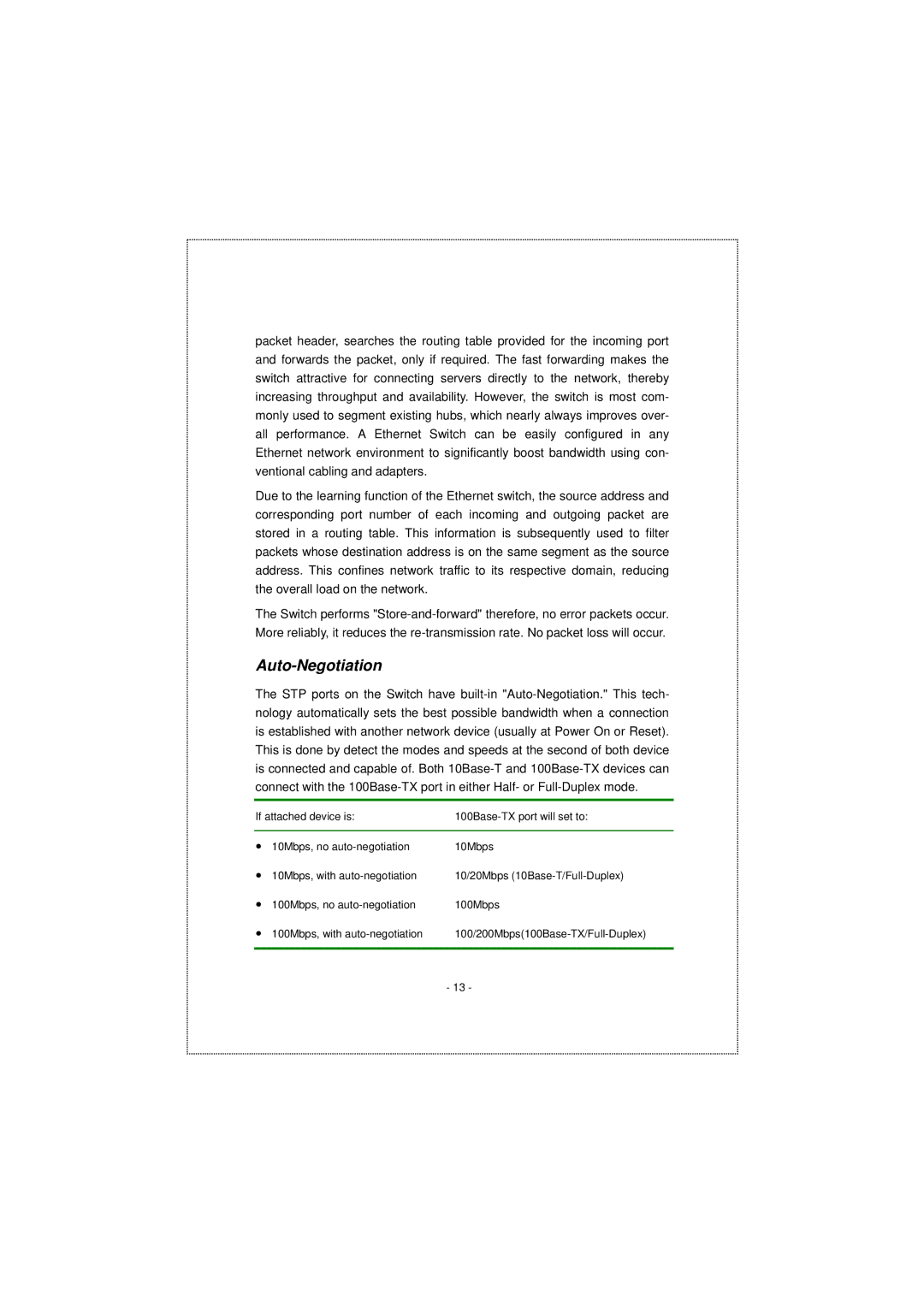
packet header, searches the routing table provided for the incoming port and forwards the packet, only if required. The fast forwarding makes the switch attractive for connecting servers directly to the network, thereby increasing throughput and availability. However, the switch is most com- monly used to segment existing hubs, which nearly always improves over- all performance. A Ethernet Switch can be easily configured in any Ethernet network environment to significantly boost bandwidth using con- ventional cabling and adapters.
Due to the learning function of the Ethernet switch, the source address and corresponding port number of each incoming and outgoing packet are stored in a routing table. This information is subsequently used to filter packets whose destination address is on the same segment as the source address. This confines network traffic to its respective domain, reducing the overall load on the network.
The Switch performs
Auto-Negotiation
The STP ports on the Switch have
If attached device is: | |
|
|
10Mbps, no | 10Mbps |
10Mbps, with | 10/20Mbps |
100Mbps, no | 100Mbps |
100Mbps, with | |
|
|
| - 13 - |
